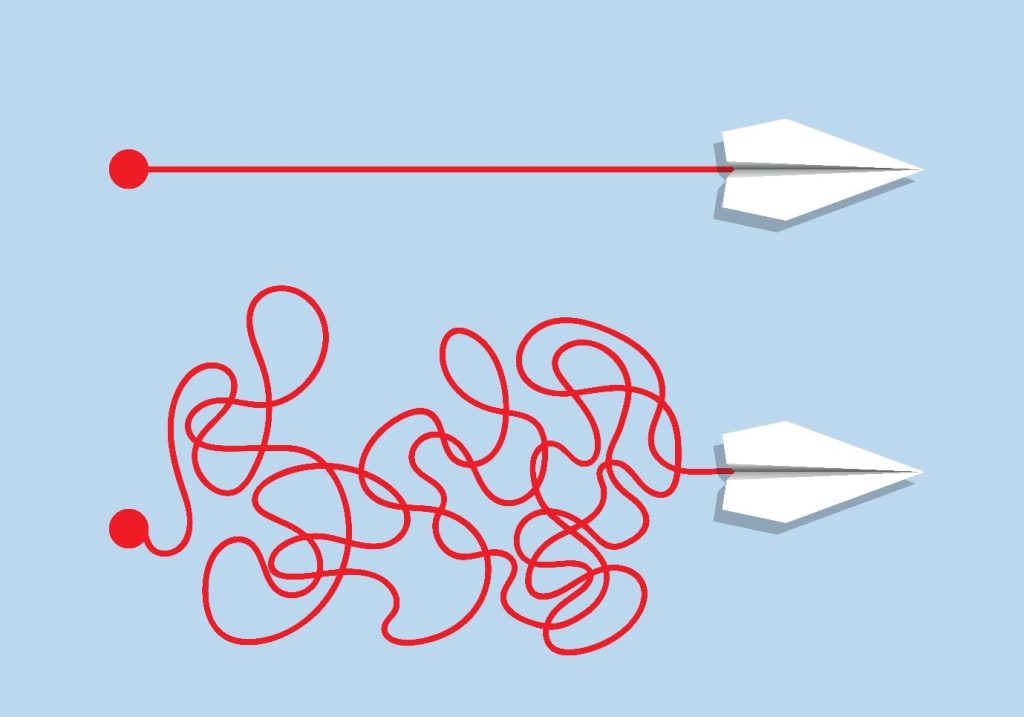In the movie When Harry Met Sally the heroine drives everyone crazy when she orders a meal. She wants extra ingredients, different combinations, the sauce on the side; she wants it just the way she likes it.
Non-profits sometimes feel the same frustration as that café waitress when they are prospecting for corporate partners. They’ve created a lovely menu of options, usually in partnership tiers, and they can’t understand why the corporate doesn’t just pick one. Or they apply the methodology of regular giving to corporate partnerships and end up disappointed.
But humans aren’t like an AI algorithm. Partnerships behave less like a formula and more like a complex adaptive system where simple cause and effect don’t work. Partnerships are a dynamic network of interactions where the interaction itself challenges and changes the system. Turns out that humans are not predictable and we all want it just the way we like it.
Why are partnerships so different?
Complex decision process, multiple decision makers
When fundraisers send out direct mail there is a simple premise: give us money to do good and here’s an example of where your money will go. The mailout has a strong emotional appeal to your personal values and beliefs. Plenty of regular giving experts will be able to predict the percentage of responses and gifts from different appeals as they behave fairly predictably.
The issue with partnerships is that there are multiple decision makers. You may have warmed up your initial contact and made them a champion for your cause. Unless they’re the CEO, they rarely have sole decision rights. Typically they need to present a business case to get investment. It will be escalated to the next levels and ultimately a CFO or similar will get involved to review the decision.
You are not in control of the corporate’s decision process; you can only work to influence it and nudge it along with good relationship management. Each human interacting with the process will see it differently and will want something specific out of it. The nature of a complex adaptive system is that each interaction will change the system itself in some way. That’s why partnerships take longer to bring to fruition and you need to plan for detours along the journey.
Mixing the head and heart
In the typical regular giving mailout or major donor ask there is a strong focus on the emotional pull. You are offering the donor the chance to bring their personal values to life. Whilst it’s true that you want to inspire a corporate partner with amazing results for the world, you’re also trying to balance the heart with the head. Corporates are answerable to shareholders and investors, so they need to justify their investment in the partnership. Your approach to a corporate partner should have a strong commercial value proposition that supports the kind of investment you’re seeking.
Non-profits can be tempted to use the formulaic approach of regular giving and create partnership tiers in lieu of dollar handles. If you do so, you’re not offering a commercial proposition, you’re simply giving them different options of giving to you. It’s a set menu and you’re likely to have the same reaction as the café waitress taking Sally’s order. Corporates will pick apart your tiered offerings to get exactly what they want. Or worse, they don’t see what they like and discard the whole menu.
Balancing different stakeholders
When partnership managers start working with a corporate prospect it can feel like they’re becoming experts in multiple areas. In large corporates you can sometimes become the glue between different departments that don’t really know each other. When you’re after a high value, long term relationship you want to dip into budget available across the business. It makes the relationship more valuable, much stickier and harder for them to flip you for the next shiny opportunity. However, it does mean interactions with a range of people who will all be driven by different things. The marketing person will often want more brand exposure, the HR head might be keen on extra volunteering and the product developer may be enticed by your deep subject matter expertise.
None of this fits an easy formula, although more experienced partnership people will notice recurring themes or categories of interest. All of these stakeholders will have different reactions to the partnership proposal and will want their own interaction with it and with you.
The best response to the Harry Met Sally challenge of partnerships is not to create a fixed menu and argue that the corporate should just choose a ready-made item. You should expect that there will be multiple iterations, a range of interactions and personal preferences. Within reason, they will want it just as they like it and you need to build in time and patience within your process to accommodate that. You may have to give them sauce on the side, but the result will be a high value partnership,

